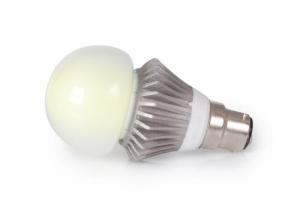
That brings LED lighting, which is much more efficient than typical incandescent lights, slightly closer to commercial viability. LED lights typically costs around $18 per kilolumen of light produced, while incandescent bulbs are around $2.20 per kilolumen. LED lighting bulbs probably won’t reach that point until 2015, Lux Research analyst Murray McCutcheon told VentureBeat.
[aditude-amp id="flyingcarpet" targeting='{"env":"staging","page_type":"article","post_id":325364,"post_type":"story","post_chan":"none","tags":null,"ai":false,"category":"none","all_categories":"enterprise,","session":"A"}']“A 60-watt equivalent bulb price of $15 is still about 50 percent higher than the price point which will enable widespread consumer adoption,” he said. “However, the announcement shows the kind of price pressure faced by lighting giants such as Sylvania and Philips, both of which offer 60-watt equivalents for about $40 retail, and we expect similar low-priced LED offerings out of Chinese LED firms this year.”
The omni-directional bulbs announced today generate between 50 and 70 lumens — a measurement of light output — per watt of electricity consumed. A typical incandescent bulb only generates around 14.6 lumens per watt. But incandescent bulbs have the advantage of generating a warm light more similar to sunlight that consumers like more, McCutcheon said.
AI Weekly
The must-read newsletter for AI and Big Data industry written by Khari Johnson, Kyle Wiggers, and Seth Colaner.
Included with VentureBeat Insider and VentureBeat VIP memberships.
“It’s also important to remember that price is not the only measure of an LED bulb, the color — warm versus cool — and distribution of the light are important, as well as the quality of the construction,” he said. “Warm white LEDs are demanded by consumers but are more expensive to manufacture than the typical blue-ish tinged cool white LEDs.”
LED lighting providers should capture around 30 percent of the commercial lighting market by 2015. But LED lighting won’t even crack the residential markets until around 2020, when it will have an opportunity to capture around 40 percent of the market, McCutcheon said.
VentureBeat's mission is to be a digital town square for technical decision-makers to gain knowledge about transformative enterprise technology and transact. Learn More